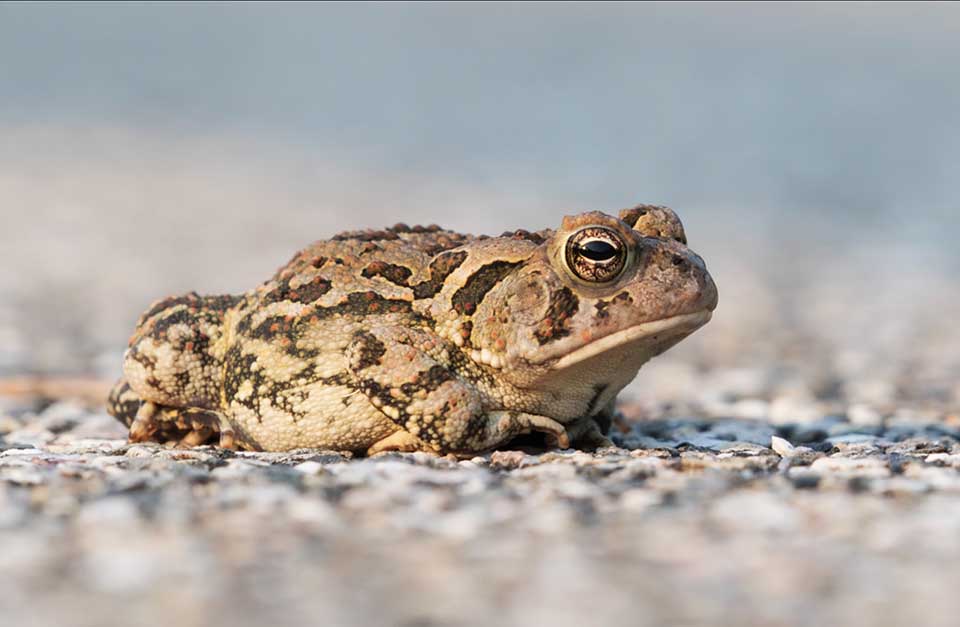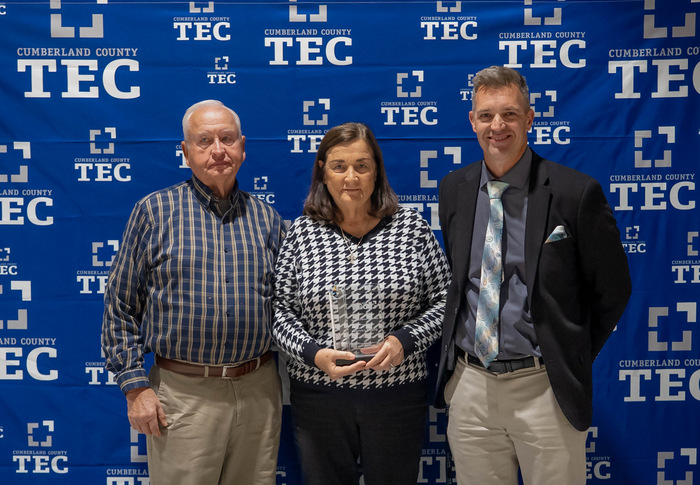Lonely Hearts?
The lone cry of a Fowler's toad on an August evening inspires our columnist to research the species and to share some toadlet tales.


The other night we ate supper in our screen porch. There was a cacophony of insect sounds, primarily katydids and crickets. But resonating above the rest was a lone—or possibly lonely—nasal cry of “w-a-a-a-a-a-h”—a Fowler’s toad. Most of these toads would have mated in April, May, or June but there are always a few lonely hearts on warm August nights. Or possibly they are just practicing their serenade for another season.
I’ve always wondered who the Fowler’s toad was named for so I used this occasion to look it up. And it turns out it was a New Jersey statesman, a forefather, I suppose. Samuel Page Fowler (1799-1844) was a member of the U.S. House of Representatives. Fowler was a naturalist from Essex County, New Jersey who founded that county’s Natural History Society, which later became the Essex Institute before merging with the Peabody Museum of Salem, Massachusetts to become the Peabody Museum of Salem. The mineral fowlerite is also named for him. Next time you hear a Fowler’s toad, Bufo anaxyrus fowleri, with its creaking “w-a-a-a-a-a-h” call, think of Sam.
Bufo anaxyrus fowleri: Bufo derives from the Latin word meaning “toad,” also Hawaiian slang; anaxyrus is a Greek king or chief; and fowleri—well, Sam.
Hearing this lonely little fellow inspired me to make the species this week’s subject.
For a number of years CU Maurice River led summer walks for kids at the Cumberland Cape Atlantic YMCA’s Camp Merrywood. Our exploration would always be stalled for a while on the east side of the swimming beach as toadlets littered the path. Young boys were especially engrossed with capturing them.
I asked my friend and toad fancier Wendy if she would like to go on a toadlet search at Merrywood and she was game. So I contacted the YMCA for permission to take a few snapshots and to hike about. Toadlets are about dime- to quarter-sized and very cryptic like their counterpart adults. Their camouflage made them initially hard to spot. But after adjusting my eyes to the wooded area’s dappled lighting their motion gave away their location. In a few moments time two gray-haired gals were giggling like schoolgirls on their quest to capture a few toadlets on film.
Fowler’s toads prefer sandy soils, like those on the coastal plain and in open wooded areas. They adapt to urban and suburban yards, fields, and gardens. Roadways and certain snake species, especially the hognose, are their nemesis.
For breeding, the toads need water to lay their black pearly eggs that are coated with a string of gel. It needn’t be a vernal pool; they are very adaptive, using flooded fields, marshes, swamps, ditches, puddles, ponds, and slow-moving sections of streams. Females lay 7,000 to 10,000 eggs. The male clasps onto the female from behind and fertilizes the eggs externally.
Mating pools with American toads can get very lively. I’ve seen water features in Maryland loaded with toads, and when a male is in the clasping position he kicks any other prospective suitors away with his back legs. This will sometimes launch a competitor completely out of the water. The ponds in Maryland’s Susquehanna State Park were sheer bedlam at the height of breeding season!

I’ve not seen mating Fowler’s toads but I do know that the males sometimes call en masse to attract females. Males often mistake a male for a female and this results in the coupled male letting out a chirping release call. Fowler’s and American toads have also been known to hybridize with each other.
The fertilized eggs take about a week to hatch and the resulting tadpoles morph into toads over 21 to 60 days (sources vary). It takes a Fowler’s one to three years to reach sexual maturity. Most sources estimate their lifespan to be five years. The toadlets we saw were likely eggs in May.
American toads and Fowler’s toads can be mistaken for one another. Some differences are the parotoid glands behind the eyes, and along the neck Americans appear more bulbous than the Fowler’s. The Fowler’s underside is creamy-colored and has a single dark spot between the forelimbs, while the American is speckled or blotched. The lower leg or tibia on the American toad has warts and the Fowler’s does not. The large dorsal spots on the Fowler’s have three or more warts in each whereas the American has only one or two larger warts.
Toads, frogs, and other amphibians do not drink like other animals; they absorb moisture through their skin. A toad’s skin is thicker and drier than that of most amphibians and they are primarily terrestrial after their egg and tadpole stages.
In dry hot weather they must seek underground refuge for protection from the elements. They are generally fossorial or subterranean during colder months, typically November through mid-March. They can’t withstand freezing temperatures, and in some areas brumation will last eight months far below ground. Furthermore they are carnivores, relying primarily on insects, snails and slugs for sustenance, and colder months provide little prey.
The large parotoid glands near the sides of a toad’s neck and shoulders produce milky toxic secretions. These are a natural defense mechanism. When handled toads may urinate, and if treated roughly they may also roll on their backs and play dead. The secretions are bufotoxins (toad toxins), similar to cardiac glycosides that can attack the nervous system. The potency of the Fowler’s toad is not as high as a number of exotic toads like the Peruvian Toad Rhinella horribilis or the cane toad. However, if you handle a toad you should wash your hands afterward. Needless to say, a toad has no place in your mouth.
The Peruvian Toad is being used to help prevent the migration of lung cancer cells. Scientists conducting this work preface their journal submission with an abstract that acknowledges that both traditional medicine and folk practices in ancient cultures in Peru used bioactive substances from toads in their treatments.

Regarding the Fowler’s toad’s toxicity, the most common interface is with people’s dogs. Generally after an encounter dogs will froth at the mouth, shake their heads in distaste, and paw at their muzzles. Sometimes they whimper and vomit. Years ago we had a yellow Labrador who made a habit of testing many things for nutritional value. Once she repeatedly mouthed a toad, just to see how really awful it was, I suppose. The result was lots of saliva and a bewildered look. It is possible for a dog to be poisoned by a toad and a trip to the vet can be warranted. This toxicity has developed to deter predation.
The size and species of the toad is also a factor. After exposure, shaking, trembling, or abnormal movements are all reasons for concern. In the United States the Colorado River toad, or exotic cane toad, is an especially toxic species, found in California, New Mexico, Arizona, and Texas. The exotic cane toad has infiltrated the United States in Florida, Texas, Hawaii, Louisiana, and other tropical areas. In southern New Jersey an encounter is highly unlikely.
Fowler’s toads are really considered to be beneficial animals. They are useful in the garden because they eat insects and small invertebrates. Most gardeners and farmers welcome them on the landscape. They are active day and night but most sources view them as primarily nocturnal.
There are stories of porchlight toads that children toss bugs to at night. Toads snatch bugs with the flick of their long tongues. Short forelimbs allow them to push in insect body parts hanging out of their mouth after a capture. They select food based on the prey’s movement, so they can starve even if surrounded by dead insects!
Next time you hear or see a Fowler’s toad, don’t forget to think of Sam.
Sources
- WakeAudubon.org
- GoneFroggin.com
- Maryland Biodiversity Project
- The Parotoid Gland Secretion from Peruvian Toad Rhinella horribilis (Wiegmann, 1833): Chemical Composition and Effect on the Proliferation and Migration of Lung Cancer Cells, Buillermo Schmeda-Hirschmann et al. 2020.
- Missouri Department of Conservation, Field Guide, Fowler’s Toad.
- Animal Diversity Website, University of Michigan, Anazyrus fowleri.
- Frog and toad pupils mainly come in seven different shapes, Science News, Carolyn Wilke, August 2021.
Samuel Page Fowler (1799-1844)
FOWLER, Samuel, physician, born near Newburg, New York, October 30, 1779; died in Franklin, NJ, February, 21, 1844. He studied medicine in Philadelphia and after being licensed in 1800, began to practice in Hamburg, NJ. A few years later he removed to Franklin, where he subsequently resided, enjoying a high reputation on account of his scientific knowledge. He interested himself in politics, and represented his county in the upper branch of the New Jersey legislature, and also his state in Congress, to which he was twice elected as a Jackson Democrat, serving from December 1833 until March 1837. As a mineralogist he deservedly held a high rank. He once owned the zinc mines in Franklin, and his descriptions of the minerals found in their vicinity, particularly the franklinite, said to have been named by him, led to the development of its metallurgy. He also discovered the rare mineral, fowlerite. He contributed frequent descriptions of New Jersey minerals to scientific and other journals (Appleton’s Encyclopedia edited by Virtual American Biographies).
Frog or Toad?
People often ask about the difference between frogs and toads. Toads have no teeth (yes, frogs do), no true webbing on their hind feet, and large wart-like parotoid glands. Frogs have smooth slippery skin and toads have dry warty skin. Toads have shorter legs than frogs and tend to crawl more than hopping like frogs, although the colloquial name is often “hop toad.” Frogs’ noses are generally pointier, toads’ rounder. And toads appear plumper or rounder than frogs. Frogs stay closely associated with water. Toads on the other hand breed in water and stay more landbound, even sheltering underground. Toads lay a string of spherical eggs connected in a clear jelly-like strand, but frogs’ eggs are normally amassed in gelatinous clusters.








